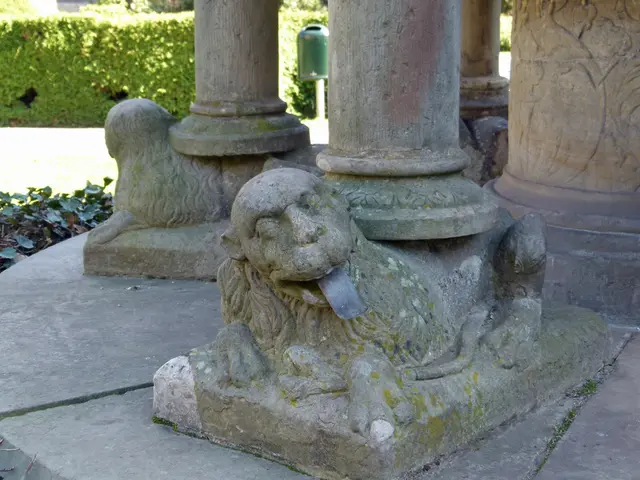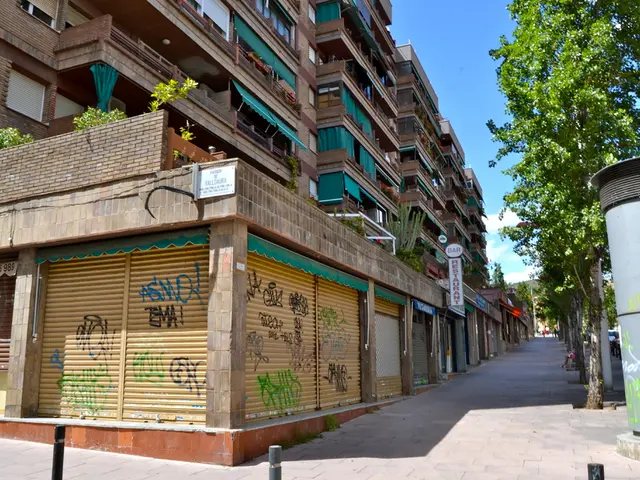Opal Evaluation for Novices: Determining Opal Worth for Amateurs in Pricing Matters
In the realm of precious stones, opals have captured the hearts of jewellery enthusiasts worldwide with their captivating play-of-color and mesmerizing beauty. This article delves into the factors that influence the value of opals, from their intrinsic qualities to their geographical origins.
The most crucial factor in determining an opal's worth is the play-of-color, a phenomenon that produces vibrant, rainbow-like flashes across the stone. Light diffracting through microscopic silica spheres inside the opal causes these stunning displays, and the size and arrangement of these spheres dictate which colors appear and how vivid they are. Red hues are considered the rarest and most valuable, followed by orange, green, and blue. Stones exhibiting broad, bright color flashes from multiple angles are far more valuable than those with small or dull patterns.
Other key factors influencing an opal’s value include body tone, transparency, pattern, brightness, cut and shape, and size. Opals range from black (N1) to white (N9) backgrounds, with black opals, such as those from Lightning Ridge in Australia, being the most valued due to the stark contrast they provide, making the colors appear more vibrant. Dark opals follow in value, with light or white opals generally fetching lower prices due to their abundance and subtler play-of-color.
Transparent or translucent opals are highly prized compared to milky or cloudy variants. Desirable patterns like harlequin, broad flash, or rolling flash are rare and boost value. More vivid and intense colors command higher prices, while well-cut cabochons with good symmetry and polish are preferred. Larger opals with exceptional color are scarcer and thus more valuable.
Regarding the origin of opals, Australian and Ethiopian opals have distinctive characteristics influencing their value and durability. Australian opals are renowned for their deep blue and green flashes, especially black opals from Lightning Ridge, which hold a premium market position. They tend to have excellent body tone, strong play-of-color, and generally higher durability. Australian opals are often regarded as more stable and less prone to cracking or crazing over time.
Ethiopian Opals are famous for their intense, fiery play-of-color, often showing vivid reds and multiple colors. However, they typically have a hydrophane nature, meaning they can absorb water, which affects their durability. Ethiopian opals can be more fragile and sensitive to changes in humidity, making them less durable and requiring more careful handling and care compared to Australian opals.
In conclusion, while the intrinsic qualities such as play-of-color, body tone, pattern, brightness, and size primarily determine an opal’s value, the origin adds another layer by influencing the stone’s typical color characteristics and its physical robustness. Australian opals generally command higher prices due to their rarity, intense color against dark backgrounds, and durability, whereas Ethiopian opals are prized for their fiery colors but may be valued slightly lower due to their relative fragility and hydrophane properties.
For further reading, The Opal Story by Andrew and Damien Cody is available in The Gem-A library. Gem-A members can sign up for Short Courses or Workshops to learn more about gemmology. Marcus McCallum, a Hatton Garden-based gemstone supplier, has provided striking photos of Ethiopian and Australian opals for this article.
[1] Cody, A., & Cody, D. (2014). The Opal Story. Gem-A. [2] McCallum, M. (Photographer). (n.d.). Ethiopian and Australian Opals. Hatton Garden, London. [3] McCallum, M. (Photographer). (n.d.). Light Opal, Black Opal, and Crystal Opal. Hatton Garden, London. [4] McCallum, M. (Photographer). (n.d.). Ethiopian Opal and Australian Opal Comparison. Hatton Garden, London.
- A expert in gemstones, Marcus McCallum, shares captivating photographs of Ethiopian and Australian opals, showcasing their distinct differences.
- Gemmology enthusiasts can delve deeper into the world of opals through Short Courses or Workshops offered by Gem-A.
- In the realm of opal publications, 'The Opal Story' by Andrew and Damien Cody is a valuable resource, available in the Gem-A library.
- Lifestyle enthusiasts and fashion-and-beauty aficionados might appreciate opals not just as jewellery, but also as intriguing additions to their home-and-garden decorations.
- A well-prepared dish with opals in food-and-drink offerings can provide an extra layer of sophistication, though it is essential to consider the opal's durability to ensure it maintains its captivating play-of-color.
- Choosing the right car should also factor in the potential for opal shopping trips, whether it's for travel, a day out in the city, or even a leisurely shopping spree in fashion-and-beauty, home-and-garden, or food-and-drink establishments.




